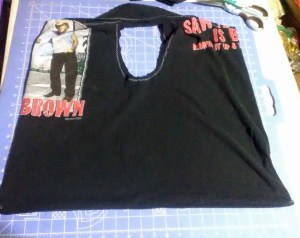
Another kitchen gadget I find myself using almost daily is my air fryer. Like my electric pressure cooker, my air fryer was a Christmas gift from my parents. This is the Gourmia model I own. It has a six quart basket and eight preset functions, or I can manually set the timing and temperature.
Unlike with my pressure cooker, I honestly wasn’t sure what to do with the air fryer at first. I don’t fry a lot of things, mainly because it’s messy. I also have the added challenge of making gluten free breading. Even before going gluten-free, I found it hard to get the breading to stick on things like chicken and have it cook all the way through without burning the outside. After some experimenting, though, I’ve found that the air fryer makes frying easier. I’ve also found that the air fryer does so much more than frying.
Ways I use my air fryer
- Potatoes Whether it’s fresh home fries or frozen tater tots, the air fryer browns them all nicely. My air fryer has a french fry preset, so I just add the potatoes and start it. Every once in a while during the cooking, I give the basket a shake to keep them from clumping. This is especially important if the basket is fairly full. You can cook them completely without oil, but I do like to toss them lightly with a little olive oil. This seems most important with french fries. They’re okay without it, but I like the flavor better with it.
- Sausage and bacon Both turn out beautifully in the air fryer. All the excess grease drains under the basket, leaving the bacon crisp and the sausage not greasy. I use the bacon setting on mine for both, but I reduce the time to nine minutes for sausage.
- Reheating leftovers We got rid of our microwave a few years ago. We really only used it to reheat leftovers, which never tasted as good as if I heated them on the stove or in the oven, and it took up a lot of counter space. While I still use our stove and oven to reheat things for the whole family, if I’m just heating a plate of food or other small amount, I’ll use the air fryer. It’s quicker than the oven, and the food heats more evenly than it did in the microwave. The texture is better, too.
- Frying I still don’t do this much, but I finally got gluten-free fried chicken to work, so that may change. I did cheat a little by quickly frying it on the stove first, just to lightly brown and set the breading. Then I added it all into the air fryer basket and let it finish it with the chicken preset function. While it’s not as low fat that way, the chicken turned out crisp and juicy but not at all greasy. That also freed up my skillet to make gravy while the chicken finished cooking so it was all hot and perfectly done at the same time.
- Baking It is essentially a counter top convection oven, so it bakes as well as an oven. I don’t use this function as much, because, with a family of five, the oven is usually more convenient. If I’m only making a few cookies, though, it works really well. I’ve also baked cheesecake in it using the recipe that came with my air fryer. It turned out delicious and was super easy to make.
What are your tips?
I’m still learning new things to try in my air fryer. With just those five things, I already use it almost every day. I would love to hear more creative ways to use an air fryer. If you have one, please share your favorite tips and recipes in the comments.
To make sure you never miss a post, please sign up for our newsletter. Once you sign up, you’ll get a confirmation email. Sometimes it gets sent to the spam box. Please look for it, because you won’t be signed up until confirmation is complete.

If you click through any of the Amazon links and make a purchase, I will receive a small commission. There is no added cost to you.












